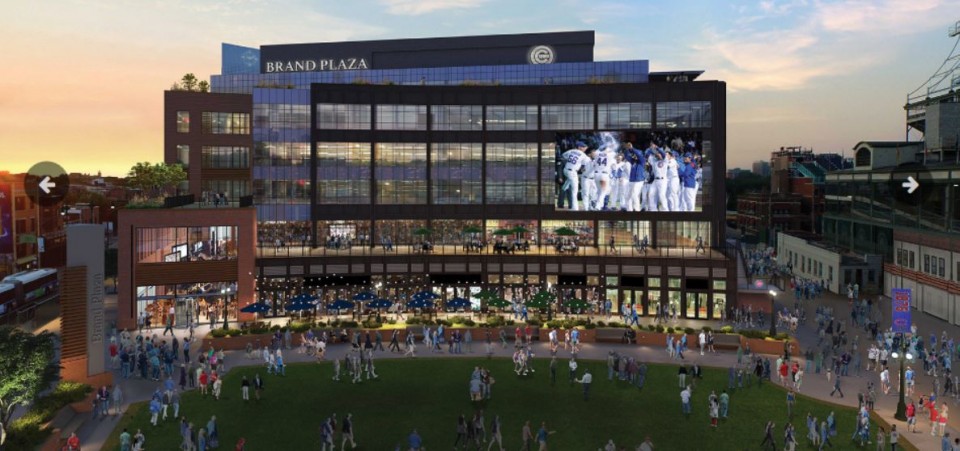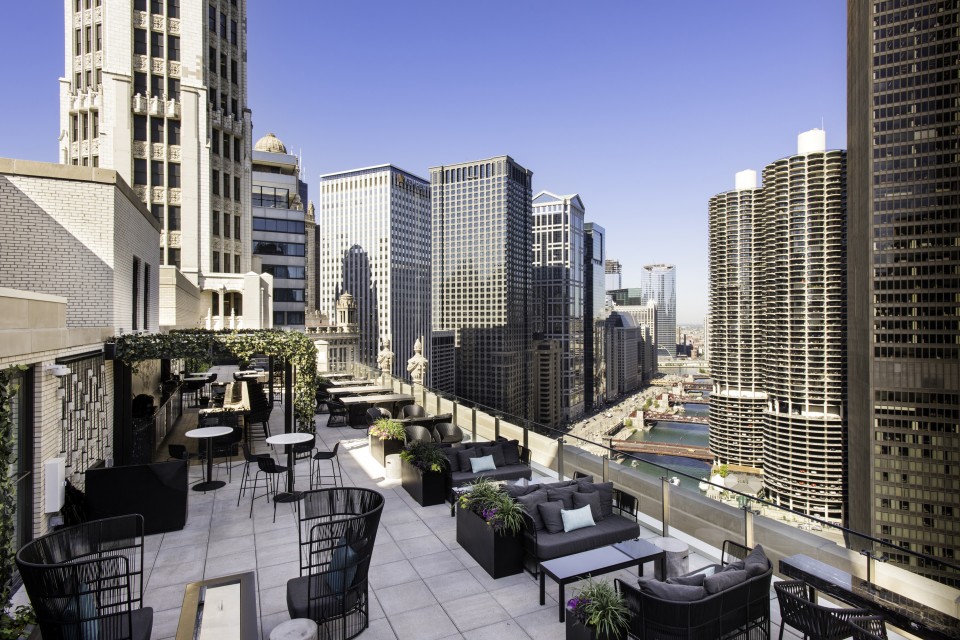


This Is Why Financial Planning Should Be In Every Chef’s Skill Set
The restaurant industry is a notoriously difficult place to do business. There are many reasons why first-time operators fail, but one of the most overlooked factors might just be the simple day-to-day bookkeeping. Understandably, most aspiring professionals, especially those chefs who want to open their own restaurant someday, don’t approach the subject of financial planning with exorbitant enthusiasm. It can be cumbersome work, and a talented culinary leader would probably rather be working on his menu than tracking expenditures. But there’s little doubt it’s a crucial tool for employees at all levels of the industry if they want to survive.
When students walk into my Personal Finance class at The Culinary Institute of America, I challenge them with what sounds like a simple task at first glance: For the next 30 days, financially speaking, track everything that comes in and out. This can be difficult for a lot of people. However, it’s the first step toward setting an honest budget. And having legitimate financial benchmarks can make or break any career, especially one as dynamic as the restaurant profession. In this industry, definitely more so than most, you can watch the bottom line soar and plummet with alarming regularity. This is true of all workers, from a tenured restaurant owner to a first-day server. Given the myriad of fluctuating factors tied to success, such as seasons, sourcing, and changing trends, there are going to be bountiful weeks, and there are certainly going to be difficult ones. With that in mind, understanding how much money is flowing in each direction is vital to developing the foresight to understand what needs to be saved and what should be spent.
Patience is another critical factor that isn’t stressed enough. Trying to do too much, too soon, can be a recipe for financial disaster. Instead of attempting to open a restaurant right out of college, it might be better to accrue some real-world experience and develop a network of positive mentors. I think the perception that most restaurants fail because they don’t have enough start-up capital is misguided. I believe most falter because the owners involved are not paying close enough attention to day-to-day finances. It’s the budgeting and planning part that turns out to be their downfall, not necessarily lacking a stellar bank account.
If this all sounds daunting, the reality is that operators don’t have to be accountants. There are software and third-party options available. Approach with caution and be sure to stay on top of the books, however. No business owner should ever know less about his operation than the accountant does.
Alternative financing is another hot topic. There are relatively new options, like crowd sourcing and Kickstarter, as well as your more traditional methods. I look at it this way, though: Chances are, if a bank turned down your request for a loan you should reevaluate your finances. Being denied credit is a chance for reflection. I always encourage operators to stay away from the quick, high-interest options that will step in when banks shut the door. In that scenario, it might be best to ask yourself, “Is this the right time to do this?” instead of seeking out other lenders.
One financial area where I do suggest seeking outside help is payroll. If a business owner has more than one or two employees, it’s always best to outsource this work. The penalties and interest for filing payroll taxes incorrectly are really harsh, and can be more than if someone files their income taxes incorrectly.
This is also a business where a lot of income goes unreported—and that is stating it lightly. My position as an accountant is to report everything, from the smallest tip to the biggest multi-unit transaction. We spend a lot of time talking about taxes, and it’s a concern that can surely catch up to you later in life.
Like we hear all the time at the CIA, it all comes down to mise en place. This unquestionably applies to finances as well as kitchen prep. Keep everything in order, develop proper habits, and the rest will take of itself. Then, in line with the original goal, chefs can get back to doing what they love most: making food, making guests happy, and, of course, making money.
Cameron Rabe is an assistant professor of business management at The Culinary Institute of America. He teaches the Personal Finance, Corporate Finance, and Intraventure Planning courses in the CIA’s Food Business Management major.

POLL: Favorite Neighborhood Burger Joint?

7 Hottest New Bars In Chicago
From boozy slushies to elegant martinis, these Chicago hot spots have raised the bar on our city’s drinking scene. Far beyond the confines of Downtown, new booze dens can be found along nondescript stretches of Logan Square, high inside hospital buildings and everywhere in between. Consider this our help in navigating.
1. Estero (Logan Square)

Pouring a combination of coffee drinks and crafty, Latin-accented cocktails, this triangular Logan Square hangout also offers a handful of snacks in breezy digs with glass-paned garage doors and tiled flooring.
2. Vol. 39 (Loop)

The lobby of the Loop’s Kimpton Gray Hotel houses this handsome lounge serving classic cocktails, caviar and creative New American small plates in clubby surrounds with law library shelves, midcentury-style furnishings and silver-gilded bar carts.
3. 1952 1/2 Liquorette (Bucktown)

Specializing in bourbon and seasonal cocktails such as juleps, this Bucktown lounge attached to Charlie McKenna’s Southern kitchen, Dixie, offers a handful of comfort-food snacks in a chic setting with barstools and banquette seating.
4. The Ladies’s Room (Logan Square)

Inspired by Macau, this intimate, reservations-only cocktail bar from the Fat Rice team is adjacent to their original Logan Square eatery. Pricey, large-format cocktails are served alongside classic drinks, house creations and a reserve wine list amid glowing red lighting, vintage Chinese furnishings and pin-up art.
5. LH Rooftop (Loop)

They have literally stacked the (roof) deck at this tri-level bar and restaurant in the London House Chicago hotel. Three swanky indoor and outdoor spaces (LH on 21, LH on 22 and the pricey private cupola) offer up craft cocktails and New American fare in ultra-chic surroundings with views of the lake, river, Loop and River North.
6. Mahalo Chicago (Wicker Park)

Hawaiian fare is what it’s all about at this casual Wicker Park spot serving everything from Spam meatballs and poke to plate lunches and skewers, all paired with tropical cocktails including a concoction in a whole pineapple. Island-style decor includes decorative surfboards, a deck with thatched umbrellas and a rooftop bar.
7. Arbella (River North)

The Tanta team shakes up the River North cocktail scene with this hip lounge pairing a long list of elaborate, globally inspired mixed drinks with equally international small plates in a lofty setting with funky light fixtures, etched mirrors and a dramatic mural on distressed brick.

New App Offers Month’s Supply Of Lunch (…For Just $119)
Move over, brown bags, there’s a new lunch app in town that promises to go easy on your wallet and tummy. Launching today in Chicago, MealPal—which is already available in New York, San Francisco, Boston and Miami—is the brainchild of Mary Biggins (ClassPass) and Katie Ghelli (ZocDoc) and offers users weekday lunches for a flat fee of $119 per month. For the math deficient, that rounds up to about $6 per lunch.
If you’re thinking to yourself that this sounds just like every other food-delivery app we already have at our fingertips, there’s one small catch. There isn’t a delivery element to this technology, unlike GrubHub, UberEats and Fooda. MealPal members must peel themselves away from their computers (big ask, we know) to go pick up lunch at participating restaurants.
“In terms of convenience, it’s certainly convenient to have a meal delivered right to your door, but that really takes away from the affordability,” Biggins said. “With MealPal, you’re going to get the same meal you’d get through some of these other services. It won’t be delivered right to you, but you’re going to get it for a fraction of the cost.”
Of course, this extra step could deter some, as research has shown that only one in five Americans steps away for a midday meal. Still, Biggins argues that her app could be a push in the right direction.
“There will certainly be times where people want to or need to pay for the convenience of having something delivered right to them on demand. But we think most of the time people are probably better served to actually get up from their desks and take a five- to 10-minute walk and go pick something up,” Biggins said. “It’s probably better for your overall mental health as well as your wallet.”
Biggins said she expects that MealPal will launch in Chicago with about 75 restaurants including Freshii, Vapiano, Just Salad, Peach and Green, and Asada Mexican Grill. In other participating cities, there’s a balanced mix of healthy (juices and salads) and stuff-your-face-with-carbs (pizza and ramen) options. Restaurants reveal their one-item MealPal menus at 5 p.m. the night before, and users have until 9:30 a.m. the morning of to place lunch orders.
Like ClassPass, MealPal (which used to go by the name MealPass) has already undergone some changes in its infancy. The latest version, available in Chicago today, boasts more customizable preferences, reminders to order and a longer booking window. Because the database of restaurants associated with MealPal is expected to grow, these updates allow users to refine their search through a series of questions about personal likes and dislikes.
In a technologically advanced city that loves to lunch, only time will tell if MealPal can get folks out of the office to make the service worth the monthly fee.

